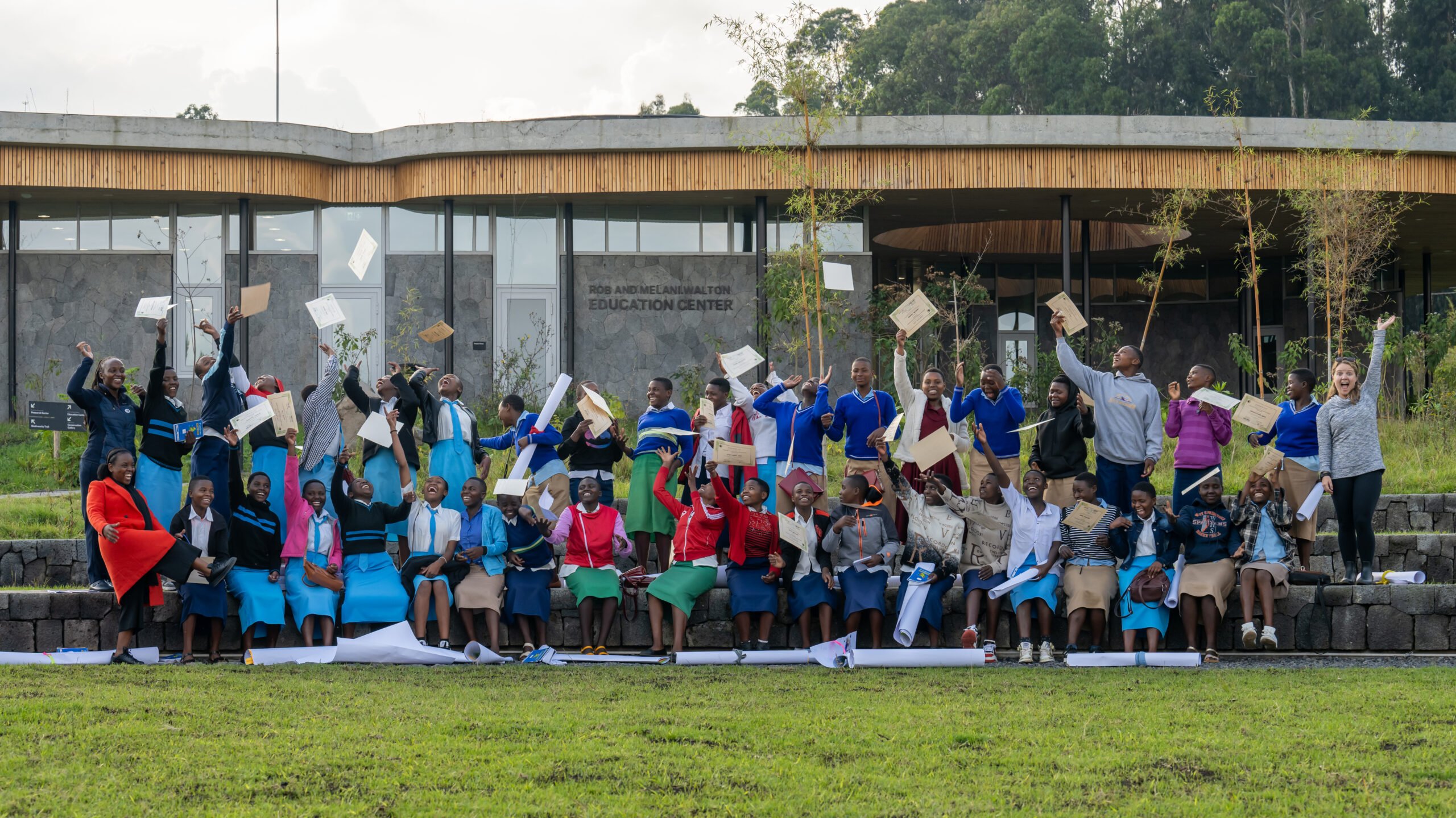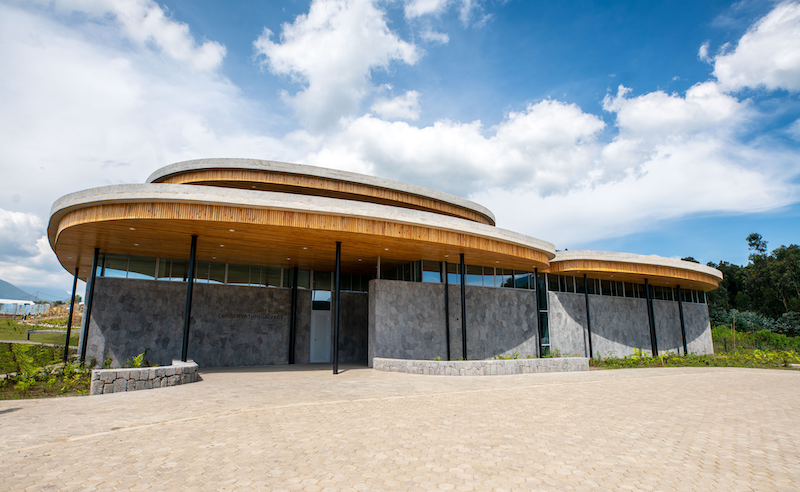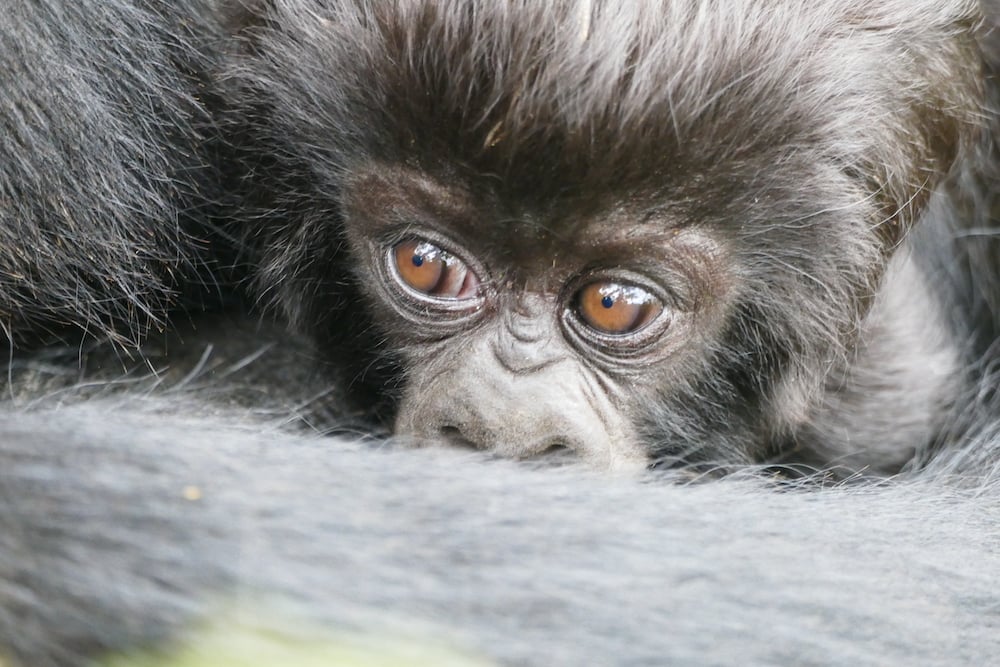Five decades ago Dian Fossey set up camp in the forests of Rwanda and began the critical scientific research and protection work for which the Fossey Fund is now famous. In order to expand the scope of our work over the ensuing decades, we knew we needed a purpose-built facility that could take our work protecting endangered mountain gorillas to the next level. But we also knew that, in creating this space, we needed to stay true to our conservation roots and build a facility that would have minimal impact on its surroundings — and perhaps even restore the area’s original biodiverse habitat.

In 2017, we launched the construction of what will be a transformative space for the many stakeholders — students, community members, government and conservation partners, tourists — with whom we work.
Together with our architectural partners, MASS Design Group, we began to design and build The Ellen DeGeneres Campus of the Dian Fossey Gorilla Fund. The project has been carefully designed to be as “green” as possible, demonstrating our commitment to enduring conservation in the region.
But what makes a building green?
Green building is “a design philosophy that focuses on increasing efficiency of resource use while reducing construction impact on health and the environment,” explains design director Emily Goldenberg of MASS Design Group. Green building promotes energy and water efficiency, takes advantage of the climate, reduces the need for air conditioning, maximizes natural ventilation and uses sustainable, locally manufactured materials. From green roofs and a constructed wetland to reforestation and rainwater harvesting, our new Campus has numerous green elements built in.
According to Goldenberg, in green architecture “every structure, wall and brick offers opportunities to benefit its users and its environment.” Sustainability, she says, should be considered over a project’s full life span, not just during the construction process but throughout the life of the building.
In August we told you about local fabrication —the process of using local materials and labor in construction that we are using to bring our Ellen Campus to life. This doesn’t just reduce waste and lower CO2 and energy emissions; it stimulates the local economy, increases local community goodwill toward the project and extends the natural life of the building. Our focus on lo-fab techniques has allowed us to hire more construction workers from the communities near Volcanoes National Park, lifting their standard of living and giving them job skills training that will improve their future employment opportunities. We feel good about the fact that our Ellen Campus is already giving back to the men and women of the nearby communities while keeping our environmental footprint small.

In addition to hiring locally, we are utilizing locally-sourced materials to further our conservation mission and limit our impact on the environment. Volcanic stones from the site’s excavation is being upcycled and re-used in the walls, while local wood and bamboo will provide warmth and texture on the interior of the buildings. Using green roofs and planting native trees helps to reclaim an ecosystem displaced by agriculture. It also increases thermal and acoustic performance, and provides opportunities for our scientists to study key ecological processes like pollination and reforestation. Additionally, a rainwater harvesting system will re-use greywater from the buildings, while a constructed wetland will utilize native species and materials to naturally treat wastewater.
At the Fossey Fund, our commitment to conservation goes beyond protecting gorillas. You can see it in everything we do — including at our Ellen Campus construction site. We look forward to welcoming you our new green home once it is completed later this year so you can see for yourself.
About the Campus:
The Ellen DeGeneres Campus of the Dian Fossey Gorilla Fund will be the permanent headquarters of the Fossey Fund’s activities. Its mission is to inspire and educate the next generation of conservationists in Africa and beyond. They will be trained to tackle the conservation challenges of the future and to ensure the survival of gorillas and their biodiverse forest home. The multi-acre, eco-friendly facility adjacent to the Volcanoes National Park will include laboratories, a computer lab and library, flexible office and meeting space, classrooms, an interactive educational exhibit and on-site residences for visiting students and scientists. Built with locally-sourced materials and supplies, the Ellen Campus will embody the Fossey Fund’s mission to conserve and limit its impact on the environment, through rainwater harvesting, green roofs, the planting of over 250,000 native plant species and a constructed wetland to treat wastewater and promote biodiversity.






